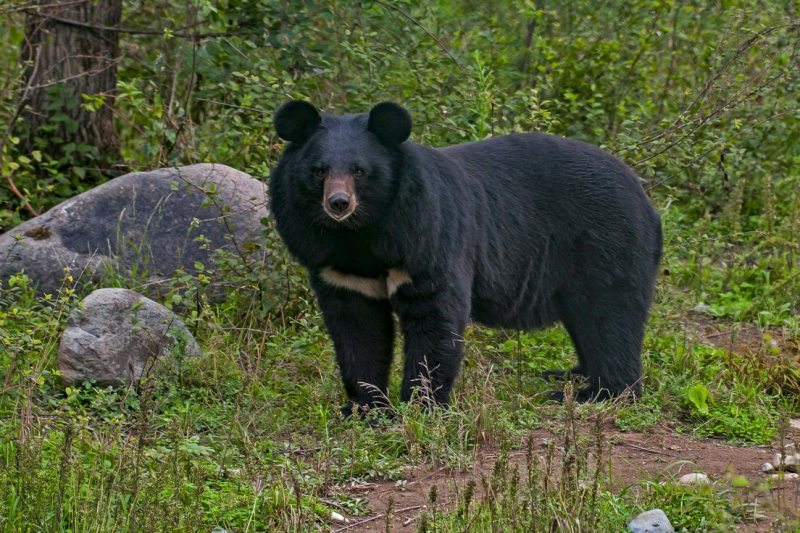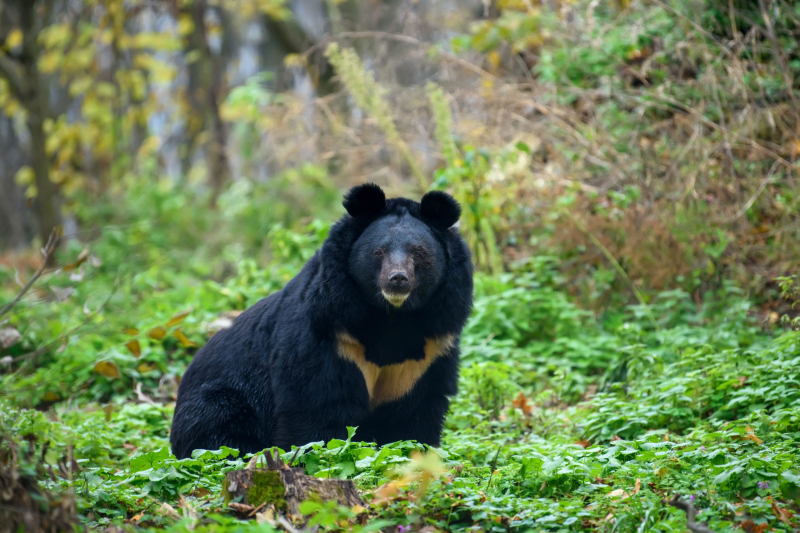Asian black bear
The medium-sized Asian black bear, often referred to as the Asiatic black bear, moon bear, and the white-chested bear is a native bear species that has adapted largely to an arboreal existence. The Himalayas, southern Iran, the northern regions of the Indian subcontinent, China, the Far East of Russia, the Japanese islands of Honshu and Shikoku, and Taiwan are all places where it can be found. It is threatened by deforestation and poaching for its body parts, which are used in traditional medicine, and is classed as vulnerable on the IUCN Red List. The Asian black bear and the brown bear both live in the Himalayan area of India. The Asian black bear is the more hazardous of the two.
The Asian black bear has a vicious disposition and is capable of random attacks. Villagers in India's forests are more at risk since black bear attacks on humans are more common than brown bear assaults. Although they prefer to simply avoid human interaction, these Indian bears are liable to attack anyone they come across in what they regard to be their territory.
Since Asian black bears have a white mark on their chest that resembles a crescent moon, they are also known as "moon bears" and "white-chested bears." While black bears are omnivores, they favor fruits, vegetables, and honey; they will never attack a person for food.













